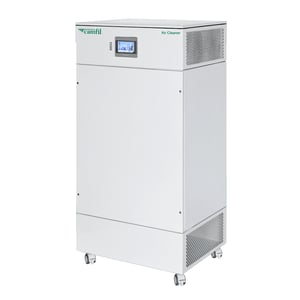Children spend hundreds of hours in the classroom every year with the goal of learning and enjoyment, but air pollution and airborne viruses can disrupt their growth and development. Contaminants in the air come from a range of sources and have varied effects on the health and wellbeing of both students and faculty.
VEHICLE EXHAUST
Vehicle fumes are a major source of air pollution for schools, particularly in heavy traffic zones, near freeways and in densely populated areas. The main air pollutants produced by vehicle exhausts are carbon monoxide, particulate matter, hydrocarbons and nitrogen oxides. The harmful air can penetrate buildings and enter classrooms through open doors and windows.
BUILDING MATERIALS
Building materials, cleaning or teaching products, and certain types of paints can all contaminate classrooms by releasing volatile organic compounds or VOCs. According to the World Health Organisation, there is no safe level of exposure to VOCs.
Building materials used across New Zealand from the 1940s through to the 1980s routinely contained asbestos. Older buildings, constructed during this time period could still contain asbestos products, which can contaminate the air, particularly during renovations.
NATURAL DISASTERS
Bushfire smoke poses a real threat to the health and safety of students, particularly those with asthma and other lung conditions. Bushfire smoke is made up of gases such as carbon dioxide, carbon monoxide, sulphur dioxide and nitrogen dioxide, as well as water vapour, particulate matter, VOCs and ozone.
In the aftermath of flooding, air quality can be compromised by the presence of mould spores and smells coming from wet carpets and building materials. Mould in particular can be very dangerous for people with asthma and allergies.
.jpg?rev=c35c0528eeaa48a8b21a4c1b30ca54af&iar=0&mw=1200&h=675&w=1200&hash=8DA1B78B028CB7D9A364A6A30A20029F)
Young children’s immune systems are still developing, and their lungs are still growing. With every breath, children take in more air per unit of body weight than adults. By extension, when air is toxic, they take in more toxic air per unit of body weight than adults.
Moreover, the impacts have ripple effects on other critical aspects of children’s lives. For example, when children get sick, they might miss school, further limiting their learning and development potential.
With the concentration of some pollutants inside a building being up to 50 times higher than outside, it is essential that schools do more to protect their pupils and staff. Ventilation or air circulation through fully opened classroom windows is not sufficient.
Air purifiers and air cleaners with integrated high-performance filters reduce the concentration of pollutants and can reduce the viral load in classroom air.
Our air cleaners and air purifiers are designed with increased air changes and improved filtration efficiency in mind. The City Touch air purifier, offers above 95% efficiency, while our air cleaner units with H13 HEPA filters installed deliver above 99.95% efficiency.
Our air cleaner range has an option to suit every area of your school. From small office spaces to classrooms, gymnasiums, libraries, cafeterias, laboratories and even large theatres – our air cleaners can improve your indoor air quality and address unique problems, such as odours.



